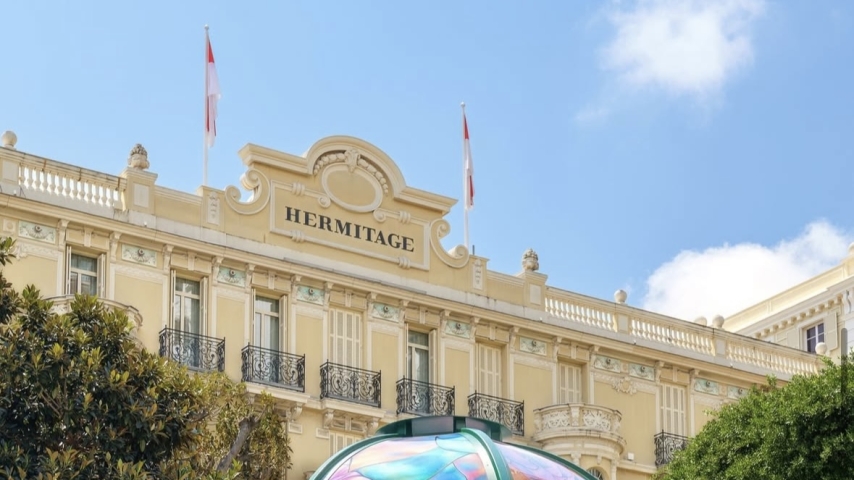
Photo credits: Hôtel Hermitage Monte-Carlo Instagram.
In August 2025, as tourists and residents crowd the marble arcades of Casino Square in Monaco, just steps away stands the quieter and more restrained sibling of the Hôtel de Paris: the Hôtel Hermitage Monte‑Carlo. With its Belle Époque architecture, discreet service, and direct access to Monaco’s premier wellness complex, the Hermitage remains a preferred destination for travelers seeking luxury without spectacle.
The hotel was constructed between 1890 and 1896 under the supervision of Monégasque architect Jean Marquet. Notably, the iconic glass cupola in the Winter Garden was designed by Gustave Eiffel, the same engineer behind the Eiffel Tower. Today, that glass-domed salon remains the architectural centerpiece of the property.
Located just behind the Place du Casino, the Hermitage offers a calmer setting compared to its more public-facing counterparts. From many of its 278 rooms and suites, guests look out over the Port of Monaco and the Rock of Monaco. Suites in the Diamond category include private terraces and jacuzzis with panoramic views across the harbor. Interiors maintain Belle Époque detailing with updated finishes, offering a blend of historical charm and modern comfort.
One of the defining features of the property is its private indoor connection to Thermes Marins Monte‑Carlo, a 75,000-square-foot wellness and medical spa facility. With a heated seawater pool, hydrotherapy treatments, cryotherapy, and a team of in-house specialists, the complex draws not only hotel guests but also Monégasque residents and athletes in training. Few five-star hotels in Europe offer such comprehensive wellness infrastructure as part of the guest experience.
Dining at the Hermitage is led by Pavyllon Monte‑Carlo, a one-Michelin-starred restaurant from chef Yannick Alléno, who opened the location in 2022. The space was designed by Chahan Minassian, with a Mediterranean-inspired palette of sea blue and stone. The restaurant’s open kitchen and bar seating encourage interaction between guests and chefs, a departure from more formal Riviera dining rooms.
The cuisine reflects Alléno’s signature approach: precise French technique rooted in sauce work and intensified by modern methods such as fermentation and cold extraction. Dishes frequently highlight local ingredients, with a focus on lightness and clarity of flavor. Desserts are sweetened with birch sap rather than refined sugar, and menus change seasonally. In the high summer season—particularly in August—the terrace becomes one of the most sought-after tables in the Principality, with views stretching across the yacht-lined harbor to the Prince’s Palace on the hill.
For travelers seeking a combination of wellness, heritage, and fine dining, Hôtel Hermitage Monte-Carlo continues to stand apart—not by ostentation, but by precision. Even as Monaco evolves, the Hermitage remains anchored in its original mission: luxury delivered with restraint.

